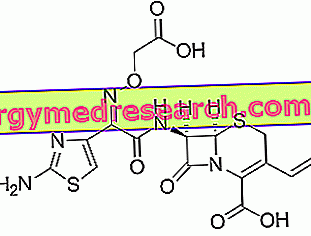
What is Vimpat?
Vimpat is a medicine that contains the active substance lacosamide and is available as oval tablets (pink: 50 mg; yellow: 100 mg; salmon: 150 mg; blue: 200 mg), in syrup (15 mg / ml) and in solution. for the preparation of infusions (drip into a vein, 10 mg / ml).
What is Vimpat used for?
Vimpat is used to treat partial seizures (seizures that originate from a specific area of the brain) and as an adjunctive therapy to other antiepileptic drugs in patients at least 16 years of age. It can be used in patients with partial seizures with or without secondary generalization (ie subsequent spread of the attack to the entire brain).
The medicine can only be obtained with a prescription.
How is Vimpat used?
Vimpat is taken twice a day with or without food. The recommended starting dose is 50 mg twice a day. After a week, the dose should be increased to 100 mg twice a day; subsequently, based on the patient's response, it can be further increased each week by 50 mg twice a day up to a maximum dose of 200 mg twice a day. To facilitate the start of treatment, a special pack containing the tablets is provided in all four concentrations available. Lower doses may be used in patients with kidney problems. If the patient is temporarily unable to take the tablets or syrup, Vimpat can be administered in the same dose via an infusion lasting between 15 minutes and an hour. However, this administration can only last for a few days.
How does Vimpat work?
The active ingredient in Vimpat, lacosamide, is an anti-epileptic drug. Epilepsy is caused by excessive electrical activity in the brain. The precise mode of action of lacosamide is not yet clear, however it seems to reduce the activity of sodium channels (pores on the surface of neurons) that allow the transmission of electrical impulses between neurons. Lacosamide is also thought to be involved in the development of damaged neurons. The combination of these actions can prevent the spread of abnormal electrical activities to the whole brain, reducing the chances of an epileptic attack.
What studies have been carried out on Vimpat?
The effects of Vimpat were first tested in experimental models before being studied in humans.
The efficacy of Vimpat taken by mouth was compared with that of a placebo (a dummy treatment) in three main studies involving a total of 1308 patients. Patients were given Vimpat in the dose of 200 mg, 400 mg or 600 mg a day, or placebo, in addition to the ongoing treatment including up to 3 other antiepileptics. The main efficacy parameter was the number of patients in which the number of attacks was at least halved after 12 weeks of stable dose treatment.
Two other studies, involving a total of 199 patients, examined the most appropriate duration for infusion of the Vimpat solution, comparing its safety with the placebo infusion.
What benefit has Vimpat shown during the studies?
Vimpat, at a dose of 200 or 400 mg a day, was more effective than placebo in reducing the number of attacks. Taken together, the results of the three main studies indicate that 34% of the patients who added Vimpat 200 mg / day and 40% of the patients who added Vimpat 400 mg / day to the ongoing treatment achieved a reduction in the number of attacks equal to at least 50%. The analogous value obtained with the addition of placebo was 23%. The 600 mg dose showed the same efficacy as the 400 mg dose, but with greater side effects.
What is the risk associated with Vimpat?
The most common side effects associated with Vimpat (those seen in more than 1 patient in 10) are dizziness, headache, diplopia (double vision) and nausea. For the full list of all side effects reported with Vimpat, see the Package Leaflet.
Vimpat should not be used by people who may be hypersensitive (allergic) to lacosamide or any of the other ingredients or with second or third degree atrioventricular block (a heart rhythm disorder). Vimpat tablets should not be used in people who are hypersensitive to peanuts or soy.
Why has Vimpat been approved?
The Committee for Medicinal Products for Human Use (CHMP) decided that Vimpat's benefits are greater than its risks in adjunctive therapy against partial seizures with or without secondary generalization in epileptic patients aged 16 and older. The committee recommended the granting of a marketing authorization for Vimpat.
Other information about Vimpat:
On 29 August 2008, the European Commission granted a marketing authorization valid for Vimpat to UCB Pharma SA, valid throughout the European Union.
For the full EPAR for Vimpat, click here.
Last update of this summary: 07-2008.



